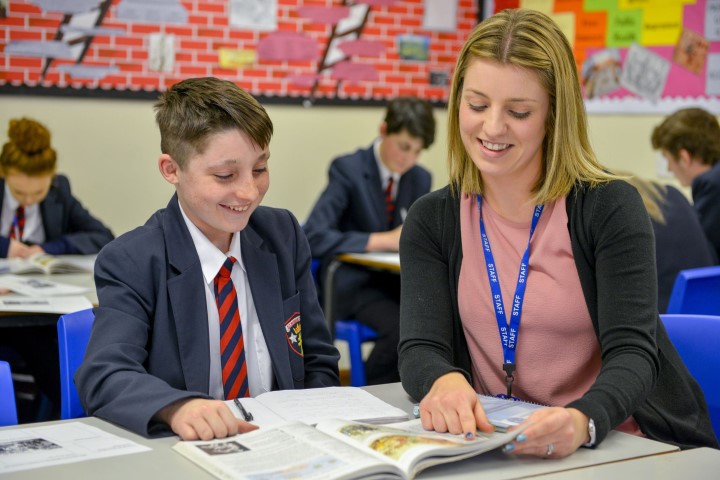St. Benedict Catholic Secondary School in Ontario, Canada switched from automatic suspensions for students who fight to a restorative justice approach that requires them to work with a mediator and take responsibility for their actions.


St. Benedict Catholic Secondary School in Cambridge, Ontario, Canada switched from automatic suspensions for students who fight to a restorative justice approach that requires them to work with a mediator and take responsibility for their actions.
The school began the shift late in the 2016-17 school year, and officially implemented the restorative justice discipline approach in 2017-18. The change led to a 74 percent drop in “conflicts of a physical nature” compared to the previous year, while also reducing suspensions by 44 percent, CBC reports.
“It’s learning how to be in relationship with somebody,” said Shelley Schanzenbacher, restorative justice practitioner at Community Justice Initiatives Waterloo Region.
“Sometimes what happens is those situations begin to escalate, because they never get put to bed,” she told Craig Norris, host of CBC Radio’s “The Morning Edition.”
Principal Dan Witt noted mediation is not something students can choose over being suspended.
“It’s not a negotiation piece,” he said. “You don’t want the mediation to be a coercive strategy.”
Students sit with a mediator to talk one-on-one about fights or other incidents, as well as issues leading up to the conflict and how it impacted them. Students involved then get together with the mediator to devise a resolution.
“It gives voice to each party and it gives an opportunity for each person to hear about, how did that feel when you said those things to me,” Schanzenbacher said.
Effective restorative justice practices draws on what scholars call “moral autonomy.” Institute for Advanced Studies in Culture founder James Davison Hunter writes in “The Death of Character” that moral autonomy is an individual’s capacity to freely make ethical decisions, because “controlled behavior cannot be moral behavior for it removes the element of discretion and judgment.”
Schanzenbacher said that even though it might seem like students are being let off easy, mediation actually is a very difficult process. It requires students to face those they’ve harmed, listen to them, express an apology and repair the damage caused. It’s a process that students must undertake freely, unlike a forced suspension.
The data suggests the approach is working well with St. Benedict students, and Schanzenbacher contends administrators are recognizing the benefits.
“They’re starting to shift their perspective,” she said, “and culture shift is hard.”
Schanzenbacher is hopeful the success so far at St. Benedict will help inspire other area Catholic schools to consider restorative justice, as well, though she acknowledges that a systemic shift won’t come easy.
“There’s a lot of hard work ahead,” Schanzenbacher said, “this isn’t going to happen overnight.”
Duke Law offers more details about restorative approaches taking root in an increasing number of schools in the report “Instead of Suspension: Alternative Strategies for Effective School Discipline.”
The report “is not only educational and informative, but also can serve as a starting point for action or as a source of guidance for policy change.”
For further reading on CultureFeed